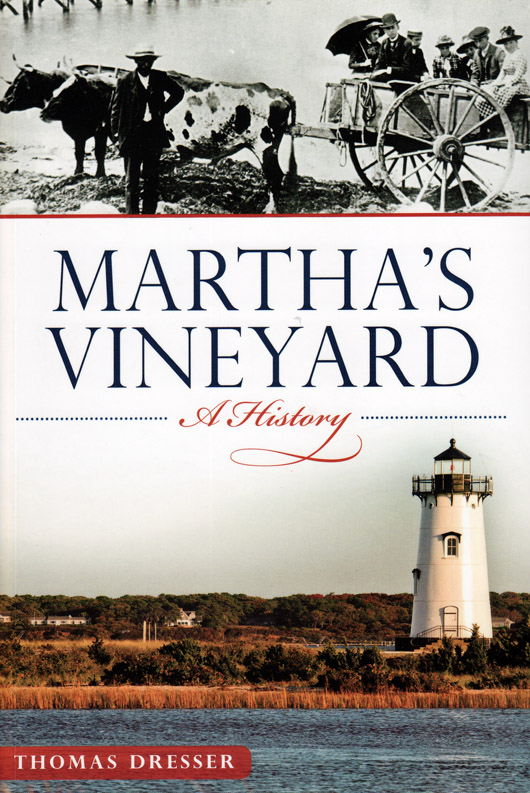Thomas Dresser’s new book, Martha’s Vineyard: A History, presents a clear and concise description of the Island’s history from its founding by Native Americans through the following years of whaling, wars and more than a few presidential visits. The result is a broad overview of an Island that has consistently played a role in the narrative of American history. In fact, the book’s most notable structural feature is how easily it tacks alongside the rest of American history.
“I wrote this book for three types of people,” said Mr. Dresser at a recent event. “I wrote it for the day tripper, who’s just coming to the Vineyard for the first time and wants to maybe get a little of the history of the Island, the ‘washashore’ . . . who [has] been here now for a little while . . . and of course the natives.”
Mr. Dresser originally decided to write the book in 2013 when he was contacted by the publisher The History Press to write a short book tracing the history of Martha’s Vineyard.
“It was suggested by the fellow who runs the Camp Ground museum,” said Mr. Dresser. “A lot of people go in there who want a relatively brief history of Martha’s Vineyard, something they can take home and enjoy quickly.”
The earliest history of Martha’s Vineyard was written by Charles Banks more than 100 years ago and weighed enough to make reading it a physical activity. Mr. Dresser said that he set out to try and create a more updated and accessible history of the Island that readers could literally pick up without a problem.
Behind each event in Mr. Dresser’s book is an undertone of the Vineyard’s larger relevance to America as a whole. The book’s opening history of the Wampanoag tribe describes both the Island’s original geography and provides a glimpse at the settlements Europeans created on Martha’s Vineyard and in the surrounding area. It shifts then to the Island’s involvement with the Revolutionary War and even the slave trade, which while limited, does provide further evidence of the Vineyard’s relevance on the greater American stage.
The subject of whaling is, of course, presented in detail, including the Vineyard’s inspiration for writers such as Herman Melville. But it also notes whaling’s inevitable decline and replacement by tourism as the central economic engine.

And as the United States went through the Civil War, the Industrial Revolution and World War II, Martha’s Vineyard in turn went through its own simultaneous shifts and transformations. Various setbacks along with successes have marked the Island’s story, and Mr. Dresser manages to capture all of these moments. For example, the book visits the Revolutionary War through the lens of the British raid on the Island in 1778, which created numerous economic problems for the Island that continued into the 19th century.
“The Island was involved with these big changes and large historical events,” said Mr. Dresser. “It’s important we remember that.”
The history of Martha’s Vineyard for Mr. Dresser is not just a separate, perfectly compartmentalized aspect of American history. Instead, it is a participant in the actively ongoing story of America and in turn reflects, for the most part, national history through the local record. Mr. Dresser does a fine job of laying out this account of the journey Martha’s Vineyard has traveled, and through his suggestion of national trends reflected in the Vineyard’s own developments, hints at where it may be headed going forward.





Comments
Comment policy »